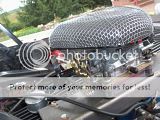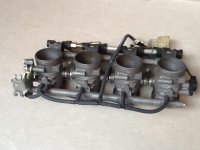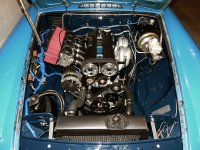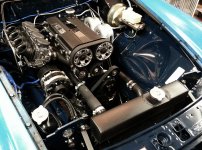I can say thanks to ford six I have seen a handful of people who have successfully and been willing to share their cut off small and large log heads.
like anything I'm sure there have been many people who have talked about it and I was inspired and designed on paper several ways it can be done. I also went in depth designing and calculating variables to have a tuned intake for my engine.
I've also got a core to work with and machined off only the log so far and blasted it clean with walnut shell media.
so check out my recent log in the link and notice the beer cap for size reference. after cutting off the log I had to take a step back and have a beer. then the ideas started flowing like port on port carburetor, tunnel rake intake, aluminum intake options, and even thinking four barrel under a six to one collector with a nos fogger system.
lots of options and would like to hear ideas or people with experience doing it.
I've already got the build underway and am going with a tubular tunnel ram aluminum one piece bolt on intake so the design is on paper, supplies ordered, and in the hands of a qualified builder/ machinists.
so I would love to share all the info and time I've put into the design as well as pictures if I get some good feed back on this project so just look at this log and share your thoughts and I can go as in depth with my intake design as you can relate to it so get me in the sharing mood
http://s1292.photobucket.com/user/autoX ... sort=3&o=1
like anything I'm sure there have been many people who have talked about it and I was inspired and designed on paper several ways it can be done. I also went in depth designing and calculating variables to have a tuned intake for my engine.
I've also got a core to work with and machined off only the log so far and blasted it clean with walnut shell media.
so check out my recent log in the link and notice the beer cap for size reference. after cutting off the log I had to take a step back and have a beer. then the ideas started flowing like port on port carburetor, tunnel rake intake, aluminum intake options, and even thinking four barrel under a six to one collector with a nos fogger system.
lots of options and would like to hear ideas or people with experience doing it.
I've already got the build underway and am going with a tubular tunnel ram aluminum one piece bolt on intake so the design is on paper, supplies ordered, and in the hands of a qualified builder/ machinists.
so I would love to share all the info and time I've put into the design as well as pictures if I get some good feed back on this project so just look at this log and share your thoughts and I can go as in depth with my intake design as you can relate to it so get me in the sharing mood
http://s1292.photobucket.com/user/autoX ... sort=3&o=1










